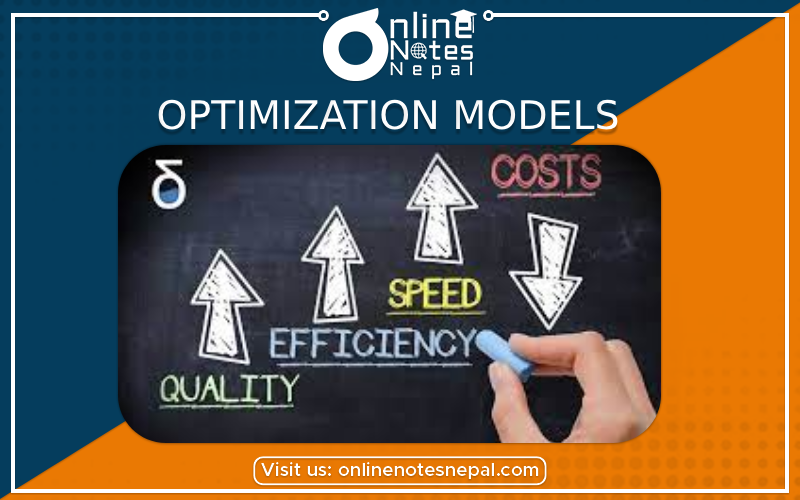Published by: Dikshya
Published date: 25 Jul 2023

I. What is Optimization?
Optimization is a fundamental concept in mathematics, engineering, economics, and various other fields. At its core, optimization aims to find the best solution (maximum or minimum) from a set of possible alternatives, while satisfying specific constraints. These alternatives could be anything from maximizing profits in a business to minimizing costs in a manufacturing process or even finding the shortest path in a transportation network.
II. Key Components of Optimization Models:
Objective Function: The objective function defines the quantity we want to optimize, whether it's maximizing profit, minimizing cost, or achieving any other desired outcome. It typically depends on decision variables.
Decision Variables: Decision variables are the unknowns in the problem that we can adjust or manipulate to optimize the objective function. These variables represent the choices or decisions we need to make to reach the best solution.
Constraints: Constraints are the limitations or restrictions that must be adhered to during the optimization process. These restrictions can be due to physical, financial, or operational reasons. The solution must satisfy all the constraints.
III. Mathematical Representation of Optimization Models:
Optimization models can be represented in mathematical form as follows:
Maximize (or Minimize) f(x1, x2, ..., xn)
subject to:
g1(x1, x2, ..., xn) ≤ b1 g2(x1, x2, ..., xn) ≥ b2 ... gm(x1, x2, ..., xn) = bm
where:
IV. Types of Optimization Problems:
Linear Programming (LP): In linear programming, both the objective function and the constraints are linear. This class of problems can be efficiently solved using algorithms like the Simplex Method.
Integer Programming (IP): Integer programming is an extension of linear programming where some or all decision variables must take integer values. This type of optimization is often used in situations where the decision variables represent discrete choices.
Non-Linear Programming (NLP): Non-linear programming deals with problems where either the objective function or the constraints (or both) are non-linear. Solving NLP problems is more challenging and requires specialized algorithms.
Convex Optimization: Convex optimization deals with problems where the objective function and constraints are convex. Convex problems have a unique global minimum, making them more manageable than non-convex problems.
Quadratic Programming (QP): Quadratic programming involves optimizing a quadratic objective function subject to linear constraints. QP problems are prevalent in engineering, finance, and control systems.
Mixed-Integer Non-Linear Programming (MINLP): MINLP combines aspects of integer programming and non-linear programming, where some decision variables are integer while others are continuous.
V. Optimization Software:
Various software packages are available for solving optimization problems, including commercial solvers like CPLEX and Gurobi, as well as open-source options like PuLP, Pyomo, and SciPy. These tools provide efficient algorithms to find optimal solutions for different types of optimization models.
VI. Applications of Optimization:
Optimization has numerous applications in real-world scenarios, including:
VII. Conclusion:
Optimization models are powerful tools for making informed decisions in diverse fields. By defining appropriate objective functions, decision variables, and constraints, optimization helps us find optimal solutions to complex problems, leading to improved efficiency, cost savings, and overall better outcomes.